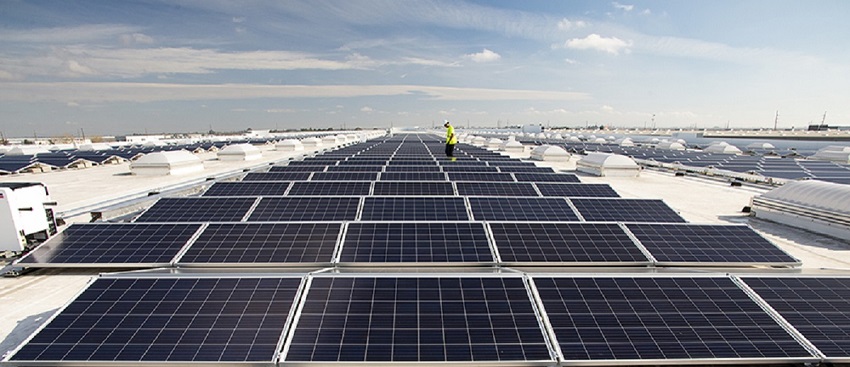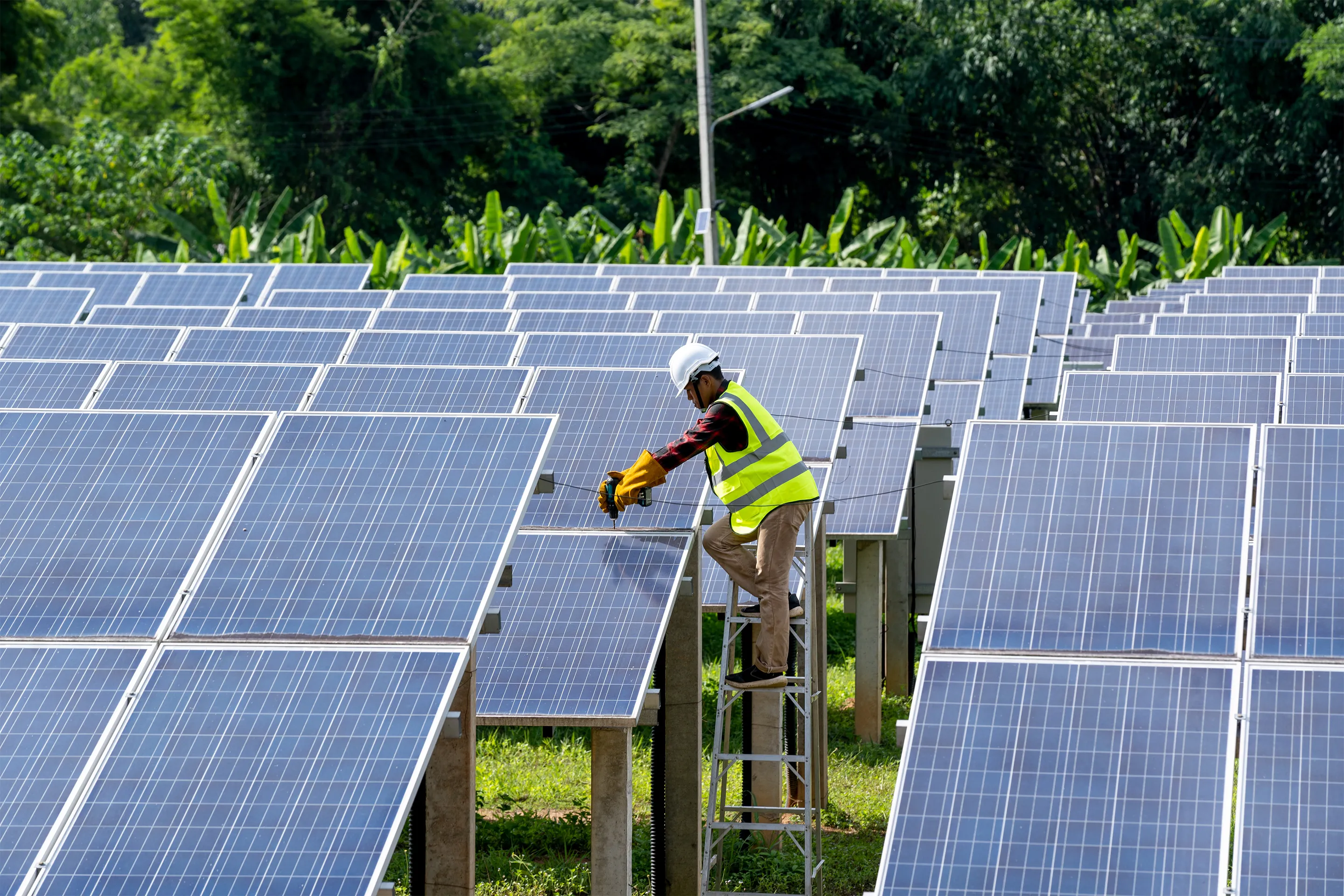5 Simple Techniques For Solar Panel Company
5 Simple Techniques For Solar Panel Company
Blog Article
Solar Financing Options PA: Our Firm Concentrates On The Setup And Management Of Photovoltaic Energy Systems
History and Advancement of Photovoltaic Panel Companies
The beginning of solar panel business can be traced back to the 1800s when Alexandre Edmond Becquerel found the photovoltaic result. Would he have pictured how his discovery would change the way we harness energy?
Early Beginnings

In 1954, Bell Labs established the first useful photovoltaic cell. This marked a substantial milestone in the history of solar energy. They were at first utilized to power area satellites, but who understood this was simply the beginning?
Evolution and Development
- In the 1970s, an energy crisis caused increased interest in eco-friendly energy sources, including solar power.
- By the 1990s, improvements in innovation and increasing environmental awareness led to the development of solar panel business internationally.
A New Period
As we entered the 21st century, the solar market experienced a rapid development. The demand for clean and renewable resource caused a new age in the solar panel market.
Fascinating Facts
- The world's very first solar power station was integrated in 1982 in Hisperia, California.
- By 2019, solar power had become the world's fastest-growing source of power.
The journey of solar panel companies has been amazing, hasn't it? The future holds immense potential, with continuous advancements paving the way for a sustainable future. Can we envision a world powered completely by solar power?
Moving on
Today, solar panel companies continue to innovate, aiming for more effective and cost-efficient options. The development of solar energy has come a long method, and yet, the journey has just started.
The Core of Solar Panel Production
Ever wonder what enters into creating those shiny, sun-loving photovoltaic panels? The process is as impressive as the end product (Solar Installers Pennsylvania). High-purity silicon, the primary active ingredient in photovoltaic panels, undergoes numerous transformations to guarantee its effectiveness and durability
From Sand to Silicon
Crystalline silicon, the backbone of the majority of photovoltaic panels, originates from easy sand. It's a fascinating journey, isn't it? The sand goes through a high-temperature reaction with carbon to form silicon. This isn't simply any silicon. The silicon utilized in photovoltaic panels is "solar-grade," with a pureness of 99.9999%. It's this pureness that enables the panels to efficiently convert sunlight into power.
Ingot Formation
As soon as the silicon is pure enough, it's time to form ingots. Photo a large, round block of strong silicon. How is this attained? Through a process called Czochralski procedure, where the silicon is melted and after that gradually recrystallized. It's a slow dance of science, leading to a solid product that is almost as pure as the raw silicon itself.
Slicing into Wafers
The ingots are then sliced into wafer-thin pieces, like slicing a loaf of bread. Each slice is a possible solar battery, waiting to harness the power of the sun. Did you understand that the silicon wafers are only about 200 micrometers thick? That has to do with half the density of a human hair! The procedure requires precision and patience, but the result is a set of wafers all set to be turned into solar batteries.
Creating Solar Battery
With the wafer ready, it's time for the magic to happen. The silicon wafer is 'doped' with other aspects like phosphorous and boron to produce an internal electrical field. It's this field that makes it possible for the conversion of sunshine into electrical power. Complex, isn't it?
Assembly and Quality Assurance
Solar cells are like puzzle pieces that come together to form a solar panel. The cells are soldered together in a grid-like pattern, then covered with a protective layer of glass. The final action includes strenuous quality control checks. After all, it's essential that every photovoltaic panel performs at its peak, wouldn't you agree?
Insider Suggestion
Always keep in mind that even the most optimally manufactured photovoltaic panel can lose efficiency due to dirt and debris accumulation. Regular cleansing can substantially enhance your panels' performance.
Comprehending the Environmental Effect of Solar Panel Companies
Ever contemplated the ecological footprint of a solar panel business? Green technology, such as solar, has transformed our energy landscape, however what about the behind-the-scenes effect?
The Production Process: A Double-Edged Sword
The production process for solar panels requires a considerable amount of energy. This procedure, called 'em bodied energy', can be seen as a form of 'energy financial obligation'. It's a little like obtaining today's sunlight to power tomorrow's energy needs. Worry not, the energy payback time is frequently shorter than you 'd believe!
- The energy payback period for photovoltaic panels is normally 1-4 years.
- After this period, the energy produced is basically carbon-free.

Life After Decommission
And what occurs when a solar panel reaches completion of its life-span? Can it simply be tossed into the garbage? No, that would not be really green, now, would it?
A viable option is recycling. While solar panel recycling is still in its infancy, it holds a world of capacity. Recycling not just keeps products out of garbage dumps however also lowers the need for new raw materials.
Accountable Sourcing: More Than A Buzzword
Where does the silicon originated from, you ask? The market's need for silicon and unusual minerals can lead to harmful mining practices. Responsible sourcing is for that reason imperative to lower damaging ecological effects.
Minimized Carbon Emissions: The Bigger Image
Let's not forget the larger photo: solar energy significantly reduces carbon emissions. Once installed, photovoltaic panels produce tidy, eco-friendly energy, balancing out their initial manufacturing footprint.
In brief, the ecological impact of solar panel companies is a complex problem. With responsible practices, the guarantee of a cleaner, greener future is well within our grasp.
Financial Performance and Market Share of Photovoltaic Panel Business
Ever wondered why some solar panel business - Commercial Solar Panels PA outshine others in the market? What sets them apart? The key depend on their monetary efficiency and market share
Financial Efficiency: A Vital Sign
Financial efficiency plays a critical role in the success more info of any service. For photovoltaic panel business, it's no various. Strong financial performance allows these business to purchase innovative innovation, research study, and development, consequently creating top quality, effective photovoltaic panels.
How do they accomplish this? With a focus on expense efficiency and tactical financial investments. Companies that manage to decrease production costs without compromising on quality tend to fare much better in the market.
Market Share: A Measure of Success
Market share, on the other hand, is a direct reflection of a company's popularity among consumers. A high market share indicates more house owners are selecting their solar panels over competitors.
What's the secret dish for acquiring a bigger market share? It comes down to client fulfillment and brand track record. Companies that focus on customer needs and keep a positive brand name image are more most likely to catch a larger share of the marketplace.
- Consumer Fulfillment: Solar panel business that deliver trusted items and exceptional client service tend to have greater customer fulfillment rates.
- Brand name Reputation: A strong brand track record is developed with time through constant delivery of quality items and services.
Financial Efficiency and Market Share: The Symbiotic Relationship
Interestingly, the relationship between monetary performance and market share is not one-sided. They feed off each other. A strong monetary efficiency can increase a company's market share, while a high market share can improve financial performance.
As a photovoltaic panel company, balancing these two aspects is essential for long-term success. A company that neglects either of them might find it tough to preserve its position in the competitive solar industry.
The Takeaway
So, what does all this mean for you? Whether you're a house owner seeking to install solar panels or a financier eyeing the solar market, understanding the monetary performance and market share of photovoltaic panel companies is essential. They are key indications of a business's health and potential for future development.
Report this page